- Register
- Log in to Tune-In
- Wishlist (0)
-
Shopping cart
(0)
You have no items in your shopping cart.
Beatles News
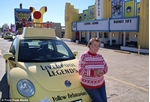
George Harrison made a secret trip to the US incognito five months before Beatlemania crossed the pond, his estranged sister has revealed. The music legend slipped into the country in September 1963 without fanfare, travelled the Midwest and played with a local band. It was the last time that the Beatle, who would have celebrated his 75th birthday on February 25, felt 'like a normal human being', said 86-year-old Louise Harrison.
Louise, who lives in a trailer near Branson, rural Missouri, and relies on welfare payments, struggles to make ends meet managing a Beatles cover band since her brother's death in 2001. She revealed that she hadn't been told about his terminal illness or the terrible pain he suffered until two weeks before he passed away aged 58 after a long battle with lung cancer.
Source: Daily Mail
details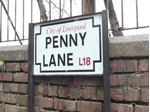
Rare photos have revealed a behind-the-scenes glimpse at The Beatles historic debut Plymouth concert.
One momentous day in 1963, the biggest band in the world arrived in Plymouth for the first time.
Still in their early days and sporting their trademark mop haircuts but with more relaxed suits than they had previously been known for, the Fab Four were working their way around the country on their autumn tour when they played the ABC on November 13.
It was to be the band's fourth tour of Britain within nine months, this one scheduled for six weeks. In mid-November, as 'Beatlemania' intensified, police reportedly resorted to using high-pressure water hoses to control the crowd before a concert in Plymouth.
Source: Rachael Dodd/plymouthherald.co.uk
details
When 19-year-old Italian figure skater, Matteo Rizzo, hit the ice for his free skate, it felt like his routine could have been programmed by a classic rock station.
Rizzo used a medley of "Come Together," "Let It Be," and "Help!" written and performed by the Beatles.
Steve Winogradsky, author of “Music Publishing, The Complete Guide,” said the question for figure skaters at the Olympics who want to use a particular song is pretty simple.
“Do they need to get permission? And the answer is no,” he explained.
But how can that be? Licensing fees are an important part of a songwriter's income.
"It's because it’s really treated as a live performance,” clarified Amy E. Mitchell, an entertainment lawyer in Texas. The live performance falls under a blanket agreement broadcasters have with artists. That means NBC has permission to broadcast a piece of music from a public, commercial setting. The Olympics broadcast is considered live, even though many of the broadcasts from South Korea are on a tape-delay.
It’s much different from when a production company wants to use a song on a TV show or a movie. That requires a synchronization fee. And getting a details

Patti Boyd, John Lennon, Mike Love of The Beach Boys, Maharishi Yogi, George Harrison, Mia Farrow, John Farrow, Donovan, Paul McCartney, Jane Asher, Cynthia Lennon at the ashram. 50 years ago, The Beatles made the journey from the UK to India to visit and stay at Maharishi Yogi’s ashram in Rishikesh to learn and practise transcendental meditation.
Why did The Beatles come to India? The Beatles met the Maharishi Mahesh Yogi for the first time in the year 1967 in London. Lead guitarist George Harrison’s wife had signed up to attend a session after coming across a newspaper advertisement. After being unable to complete a 10-day programme due to the untimely death of band manager Brian Epstein, the band decided to explore their meditational journey in India at Maharishi’s ashram. John Lennon and Harrison, two of the most dedicated meditators among the Beatles, arrived with their wives, Cynthia Lennon and Pattie Boyd on 15 February, 1968. The other two arrived three days later, Paul with his girlfriend Jane Asher and Ringo with his wife Maureen.
Source: cntraveller.in
details
The 400GT 2 2 left the factory on Italy in 1967 and was one of only four to be imported into Britain
It was purchased by the Beatles' bassist in February 1968 during the height of the band's fame and joined his considerable collection of sports cars.
The red two-door was converted to right-hand drive especially for the singer and he continued to own it for over a decade, before finally parting with the powerful V12 in 1979.
Since then the Italian classic has had a number of owners and has now emerged for sale once again with Bonhams Auctions in London.
The auctioneers are predicting the coupe, which is one of just 250 to be built, will attract offers of between £400,000 and £500,000.
Source: express.co.uk
details
Tom Petty And The Heartbreakers perform The Beatles' classic, "I Need You", in the latest video preview to the February 23 release of "Concert For George", a 2002 tribute event in honor of George Harrison that is being reissued to mark the late guitarist's 75th birthday on February 25.
The song first appeared on the UK band's 1965 album and soundtrack from their film, "Help!" irected by David Leland, "Concert For George" features a variety of artists performing at a November 29, 2002 tribute show at London's Royal Albert Hall on the first anniversary of Harrison's passing from lung cancer at the age of 58.
"We will always celebrate George's birthday," says his widow, Olivia Harrison, "and this year we are releasing Concert For George in a very special package in memory of a special man."
Source: antimusic.com
details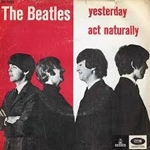
Ringo Starr may be best known as a rocker (or a “mocker,” as he joked in A Hard Day’s Night), but he has made no secret of his love for country music.
He cowrote “What Goes On,” a country-tinged track off the Beatles’ Rubber Soul, and penned his own full-fledged take on the genre, “Don’t Pass Me By” off the White Album. Early in his solo career, Starr released 1970’s Beaucoups of Blues, which served as his ode to the genre; on his last album, Give More Love, he once again nodded to the genre with “So Wrong for So Long.”
Even before he joined the Beatles, Starr briefly played in a country and western-influenced band. Therefore it comes as little surprise that the drummer would sing lead on “Act Naturally,” a Buck Owens cover that transformed into Starr’s personal theme song. In addition, it foreshadows the Beatles’ continuing explorations into country.
Source: Kit O'Toole/somethingelsereviews.com
details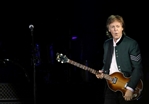
British musician Paul McCartney performs during the "One on One" tour concert in Porto Alegre, Brazil.
The Israeli Wolf Prize will be awarded at the end of May to nine laureates in the fields of music and science, including legendary British rocker Sir Paul McCartney.
The Wolf Foundation announced on Monday that it selected McCartney – who will share the prize with conductor Adam Fischer – for being “one of the greatest songwriters of all time.” McCartney’s songs, the prize jury noted, “will be sung and savored as long as there are human beings to lift up their voices.”
The nine laureates – in the fields of music, agriculture, physics, chemistry and mathematics – are invited to a special ceremony at the Knesset hosted by President Reuven Rivlin at the end of May.
Source: Amy Spiro/jpost.com
details
Do you ever meet somebody who doesn’t tell you how busy they are?
Expressing how much we have going on—without, of course, providing specifics—seems to be our veritable marching orders as humans these days. We conveniently leave out the fact that we’re not learning and evolving more, and where our time is really going is to listicles, Netflix, carping on social media about things that we cannot change. Consequently, that person who used to take two weeks to respond to your email now takes two months, and it’s not like they’ve morphed into a modern-day Socrates in the interim.
Source: Colin Fleming/thedailybeast.com
details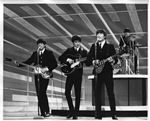
On this day in 1964, The Beatles made their historic debut on The Ed Sullivan Show, performing a set that included “All My Loving” and “She Loves You” in front of a national audience. To celebrate, we want to know your favorite Beatles songs of all time.
Of course, Paul McCartney, John Lennon, George Harrison, and Ringo Starr each had their own respective hits after the break-up of the band, but we’re focusing on songs released by the collective group. It’s hard to argue against some of The Beatles’ classic hits like “Here Comes the Sun”, “Come Together”, “Let It Be”, “Yesterday”, or “Hey Jude” (to name just a few), but their deep cuts feature no shortage of gems, either.
Source: Josh Glicksman/consequenceofsound.net
details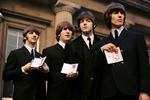
This is the month to remember the struggles and celebrate the accomplishments of African-Americans and their fight for long-withheld civil rights. But as we mark Black History Month, it is worthwhile to consider the often-overlooked role three legendary white pop-music acts played in the demise of segregation-customary and codified--in the United States.
We usually don't think of swing-music titan Benny Goodman, Frank Sinatra and The Beatles as civil rights movement figuregheads, but each in their own way certainly deserves to be remembered as such. Each took the lead in advancing the cause of social and political equality in America.
Source: Chuck Darrow/phillyvoice.com
details
Following the announcement that special reissues of Concert for George, the film and album documenting the all-star 2002 George Harrison tribute show held at London’s Royal Albert Hall, will be released this month to mark what would’ve been Harrison’s 75th birthday comes word that the movie also will be shown in select North American theaters in the coming weeks.
Starting on February 20, a restored version of Concert for George, remastered in 5.1 stereo surround sound, will be screened in dozens of theaters across the U.S. and Canada. Visit ConcertforGeorge.com to check out a list of confirmed screenings.
Source: columbusnewsteam.com

“Concert for George,” a documentary about the tribute concert to George Harrison, will get a theatrical run presented by Abramorama in association with Concord Music beginning Feb. 20. The film will be shown in more than 75 theaters across North America.
The launch takes place five days before what would have been George Harrison’s 75th birthday. The international rollout of the film will be announced next week.
“C0ncert for George” was held on Nov. 29, 2002, one year after Harrison died. His widow, Olivia Harrison, and longtime friend Eric Clapton organized a tribute performance in his honor at London’s Royal Albert Hall performed by a lineup that included Clapton, Joe Brown, Dhani Harrison, Jools Holland, Jeff Lynne, Paul McCartney, Monty Python, Tom Petty, Billy Preston, Ravi and Anoushka Shankar and Ringo Starr.
Source: Variety
details
Usually we receive realistic action figures from blockbuster movies mainly from comic book and the Star Wars franchises.
Well a new toy has been revealed that will make fans of The Beatles happy because it's a figure based on the likeness of the late John Lennon.
Molecule 8 issued out a new press release saying that this new 1/6th scale (12 inches) John Lennon toy will be available from April 2018. The list of features have been posted below as seen on the official website.
Source: By Damian Seeto/emptylighthouse.com
details
As the Time’s Up / #metoo women’s movement that began in 2017 rages on, it’s worth noting that a major rock and roll icon and his famous wife addressed the women’s rights issue decades ago. The
response at that time was generally lukewarm — not surprising, considering back then the world was far from ready to acknowledge the mistreatment of females. Given the sea change that is currently in progress, John Lennon and Yoko Ono were ahead of their time.
In 1972, they released Sometime in New York City, the first album where the two shared top billing. As an aural document of their lives in New York City, its content didn’t consist of songs about love and romance; instead the project targeted intolerance and injustice that the pair were witnessing through their association with key activists of the day, including Abbie Hoffman and Jerry Rubin. The song from that LP the pair chose to release as a single was stunningly contentious in its title and lyrics, both of which contained a racial epithet to get their point across: “Woman is the N––––– of the World.” John Lennon was a rare breed: a rock star who didn’t recoil from controversy.
details